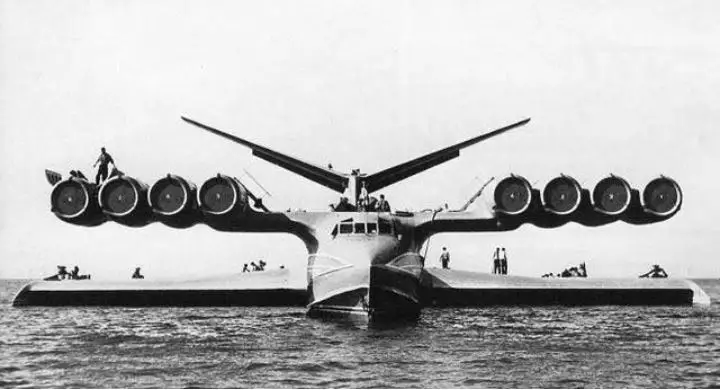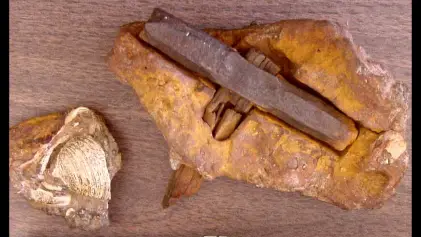 he Ekranoplan concept is identified as more of a maritime ship rather than an aircraft, this classification has been given by the International Maritime Organization. During the Cold War era, the Soviet Union was looking for military innovations that would impress the rest of the world and overshadow the technology presented by America. At the same time, there was a need for a faster form of transportation for military logistics.
he Ekranoplan concept is identified as more of a maritime ship rather than an aircraft, this classification has been given by the International Maritime Organization. During the Cold War era, the Soviet Union was looking for military innovations that would impress the rest of the world and overshadow the technology presented by America. At the same time, there was a need for a faster form of transportation for military logistics.
The science behind it
In the 1950s, the fastest boats in the world were hydrofoils, these boats were quite normal, however, they had steel wings placed beneath the tip of the boat in order to raise its top, which would reduce drag, therefore increasing its speed. The speed on these types of boats was around 100 km per hour and this was due to the hydrofoils which were causing cavitation and disturbing lift because at a certain speed even the hydrofoils were creating a drag.

Rostislav Evgenievich Alexeyev was a pioneer of Soviet engineering who came up with a solution to this problem. In order to remove the cavitation that disturbs lift he would take the hydrofoils from under the boat and create wings that would come on the side of the ship just like an aircraft. The motors would be switched to engine planes which would be placed in front of the wings in order to create enough power to lift off entirely from water.
This presented a drastic change from hydrodynamics to aerodynamics. Alexeyev came up with this idea by looking at normal aircraft having problems when landing, as they would approach the ground, the push force created by the engine would still not allow them to fully stick to the ground until they lost enough speed, this is because of the ground effect. Alexeyev applied the same principle when coming up with the Ekranoplan.
Gathering the required resources
Before building the Ekranoplan (screen plane), Alexeyev came up with many different prototypes utilizing the ground effect concept with great success, however, to really prove the capability of his innovation he needed a lot more resources, and gathering such resources was quite difficult in the 1960’s Soviet Union communistic government.

With the conflicts between the Americans and the Soviets during the Cold War in 1963, Nikita Khrushchev, who led the Soviet Union from 1958 to 1964, was looking for a new innovative form of transportation that could also be weaponized, something that the Americans did not possess. Alexeyev approached Nikita with the idea of an Ekranoplan, stating that with the abilities of this ship it could easily be used for military transport and strategic offense.
Alexeyev presented the following military advantages that the Ekranoplan would have:
- Military transport capabilities
- Low radar signature
- Invisible to sonar
- Ability to pass over naval mines
- Very high speed
- Access to shallow coastlines
Nikita was very excited about the idea of the Ekranoplan and allowed the gates of military funding to open. This was very good news as it offered Alexeyev more than sufficient resources to build the KM Ekranoplan (also nicknamed the Caspian Sea Monster) which would become the biggest “aircraft” from the Cold War era.
An engineering success
The KM Ekranoplan was powered by 10 Dobrynin VD-7 turbojet engines producing 28,670 lbf (pound-force) each. Eight of these turbojet engines would be located right in front of the ship which was used to lift the ship by creating the ground effect.
The other two turbojet engines were located on the tail of the plane that was used to push the whole ship whilst it was lifted above the water between 4–14 meters (depending on how big the waves were). The Ekranoplan was simply an innovation of aerodynamic engineering as it was able to not only lift but push itself whilst having a weight of 240,000 kg and it could carry an extra 350,000 kg and still perform at its maximum capabilities. Its cruise speed was about 430km per hour and empty this monster could reach even 500km per hour.
However, despite how excellent the KM Ekranoplan looks it suffered from one major flaw, which was only being able to fly when the sea was relatively calm, to be more specific if the waves were higher than two meters the ship/plane could not achieve the ground effect. At the same time, the pilots who flew this monster said that the ship was a nightmare to operate as it was very difficult to maintain the ground effect going. Therefore the ship only operated in the Caspian Sea, which is why it was nicknamed the Caspian Sea Monster.
Sadly, the KM Ekranoplan was never implemented in the military service as in 1966, a new Soviet leader by the name of Leonid Brezhnev was in power. Brezhnev was more interested in conventional military projects, therefore he decided to stop the funding of the KM Ekranoplan for further development. The concept was picked back up in 1984 by a new Soviet leader, Yuri Andropov, however, technology had advanced enough to open the door to more efficient projects.
Avid Writer with invaluable knowledge of Humanity!
Upcoming historian with over 30 million views online.
“You make your own life.”





